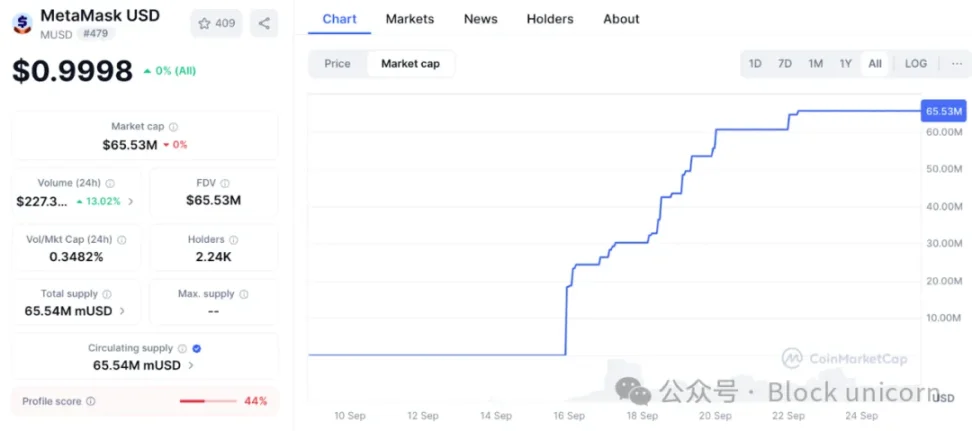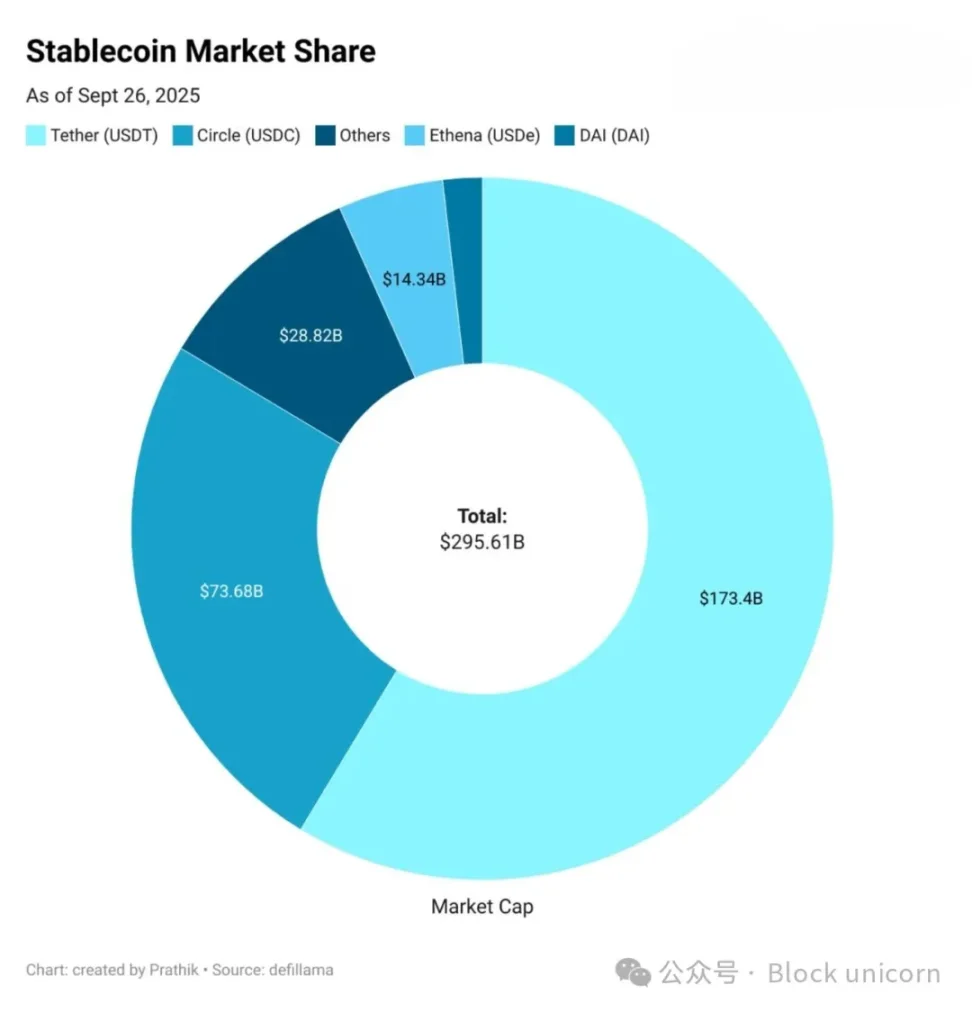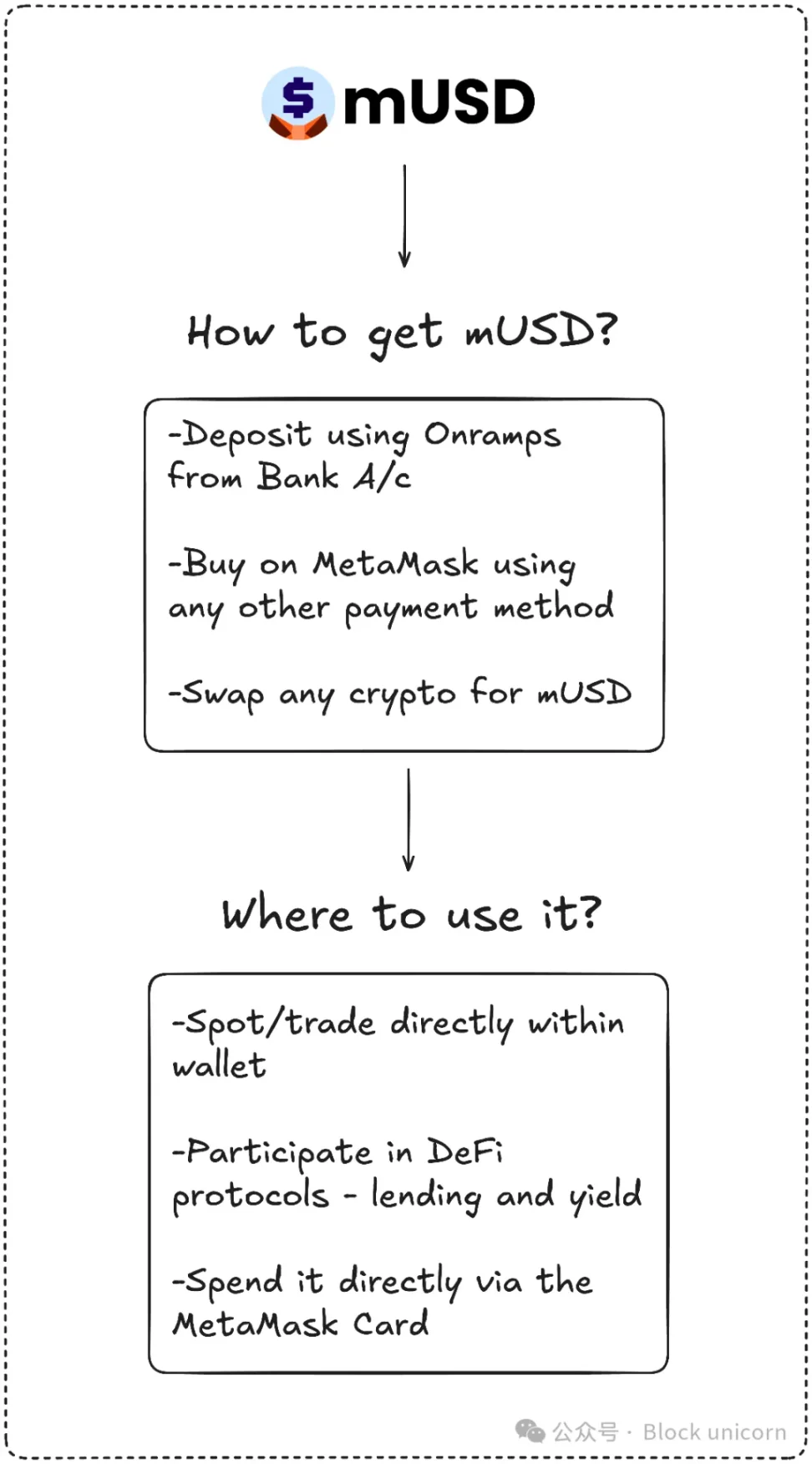MetaMask's mUSD: An Ambitious Move to Tap into the Stablecoin Market with Hundreds of Millions of Users
Whoever controls the users controls the tokens.
Whoever controls the users controls the tokens.
Written by: Prathik Desai
Translated by: Block unicorn
Lately, every week feels like déjà vu—another stablecoin launch, another attempt to change the direction of value. First, we saw Hyperliquid’s bidding war to launch USDH; then we discussed the verticalization trend to capture U.S. Treasury yields. Now, it’s MetaMask’s native mUSD. What ties all these strategies together? Distribution power.
Distribution power has become a cheat code, not just in crypto but across industries, to build a thriving business model. If your community has millions of users, why not leverage it and airdrop tokens directly into their hands? However, this doesn’t always work. Telegram tried to do this with TON, claiming 500 million messaging users, but those users never migrated on-chain. Facebook tried the same with Libra, convinced its billions of social media accounts could form the basis of a new currency. In theory, both projects seemed destined to succeed, but in practice, they failed.
This may be why MetaMask’s mUSD (with fox ears and a “$” sign on top) caught my attention. At first glance, it looks no different from other stablecoins—backed by regulated short-term U.S. Treasuries and issued using the framework developed by the M0 protocol via Bridge.xyz.
But what sets MetaMask’s mUSD apart in the current $300 billion stablecoin market dominated by a duopoly?
MetaMask may be entering a fiercely competitive field, but it has a unique selling point that no other competitor can match: distribution. MetaMask boasts 100 million annual active users worldwide, a user base of unparalleled scale. mUSD will also be the first stablecoin natively issued within a self-custody wallet, allowing users to buy, swap, and even spend in stores via the MetaMask card. Users no longer need to hunt across exchanges, bridge across chains, or deal with the hassle of adding custom tokens.
Telegram lacked this alignment between product and user behavior, but MetaMask has achieved it. Telegram tried to move its messaging users onto the blockchain for decentralized finance applications. MetaMask, on the other hand, enhances the user experience by integrating a native stablecoin directly into its app.
Data shows the adoption of this move is happening very quickly.
MetaMask’s mUSD market cap soared from $25 million to $65 million in less than a week. Nearly 90% of the funds come from ConsenSys’s internal Layer 2 platform, Linea, indicating that MetaMask’s interface can effectively channel liquidity. This leverage is similar to what exchanges have done in the past: in 2022, Binance automatically converted deposits into BUSD, causing its circulation to skyrocket overnight. Whoever controls the users controls the tokens. MetaMask has over 30 million monthly active users, the largest user base in Web3.

This distribution power will set MetaMask apart from early entrants who tried and failed to build sustainable stablecoins.
Telegram’s grand plans partly failed due to regulatory issues. MetaMask has avoided this by partnering with Bridge, a Stripe subsidiary, and backing each token with short-term Treasuries. This satisfies regulatory requirements, and the newly enacted U.S. GENIUS Act provides a legal framework from day one. Liquidity will also be key. MetaMask is injecting mUSD trading pairs into Linea’s DeFi, betting that its internal network can consolidate its application.
However, distribution does not guarantee success. MetaMask’s biggest challenge will come from existing giants, especially in a market already dominated by a few major players.
Tether’s USDT and Circle’s USDC account for nearly 85% of all stablecoin market share. In third place is Ethena’s USDe, with an issuance of $14 billion, attracting users with its yield. Hyperliquid’s USDH has just launched, aiming to reinvest exchange deposits back into its ecosystem.

This brings me back to the question: What does MetaMask ultimately want mUSD to become?
It seems unlikely that USDT and USDC will face a direct challenger. Liquidity, exchange listings, and user habits all favor the incumbents. mUSD may not need to compete head-on. Just as I expect Hyperliquid’s USDH to benefit its ecosystem by passing more value to the community, mUSD is likely designed to extract more value from its existing users.
Whenever a new user deposits via Transak, whenever someone swaps ETH for the new stablecoin inside MetaMask, and whenever they swipe the MetaMask card in stores, mUSD will be the default choice. This integrates the stablecoin as the default option within the network.
This reminds me of the days when I had to bridge USDC between Ethereum, Solana, Arbitrum, and Polygon, depending on what I needed to do with my stablecoins.
And mUSD puts an end to all the tedious bridging and swapping.

Then there’s another important takeaway: yield.
With mUSD, MetaMask can capture the yield from the U.S. Treasuries backing the token. For every $1 billion in circulation, tens of millions of dollars in annual interest flow back to ConsenSys. This transforms the wallet from a cost center into a profit engine.
If just $1 billion worth of mUSD is backed by equivalent U.S. Treasuries, it could generate $40 million in annual interest income. By comparison, MetaMask earned $67 million in revenue from its fees last year.
This could open up another passive and significant revenue stream for MetaMask.
However, there’s one factor that makes me uneasy. For years, I’ve considered wallets to be neutral signing and sending tools. mUSD blurs that line, turning what I once trusted as neutral infrastructure into a business unit profiting from my deposits.
So, distribution is both an advantage and a risk. It could make mUSD the default sticky choice, but it could also raise concerns about bias and lock-in. If MetaMask tweaks the swap flow to make its own token path cheaper or more prominent, it could make the world of open finance less open.
There’s also the issue of fragmentation.
If every decentralized wallet starts issuing its own dollar, it could create multiple closed-loop currencies, rather than the interchangeable USDT/USDC duopoly we have now.
I don’t know where this will go. By integrating mUSD with the card, MetaMask has neatly closed the financial loop of buying, investing, and spending. The first week’s growth shows it can overcome the initial hurdles of launch. However, the dominance of existing giants shows just how challenging the climb from millions to billions can be.
I don’t know where this will go. By integrating mUSD with the card, MetaMask has nicely completed the financial cycle of buying, investing, and spending mUSD. The first week’s growth suggests it can overcome the initial launch hurdles. However, the dominance of existing giants shows just how challenging the climb from millions to billions can be.
Between these realities may lie the fate of MetaMask’s mUSD.
Disclaimer: The content of this article solely reflects the author's opinion and does not represent the platform in any capacity. This article is not intended to serve as a reference for making investment decisions.
You may also like
SociFi dream shattered? Farcaster pivots to focus on the wallet track
Past data has shown that the "social-first strategy" is ultimately unsustainable, as Farcaster has consistently failed to find a sustainable growth mechanism for a Twitter-like social network.

Crypto tycoons spend eight-figure annual security fees, just to avoid incidents like Bluezhanfei's experience.
No one understands security better than the crypto industry leaders.



